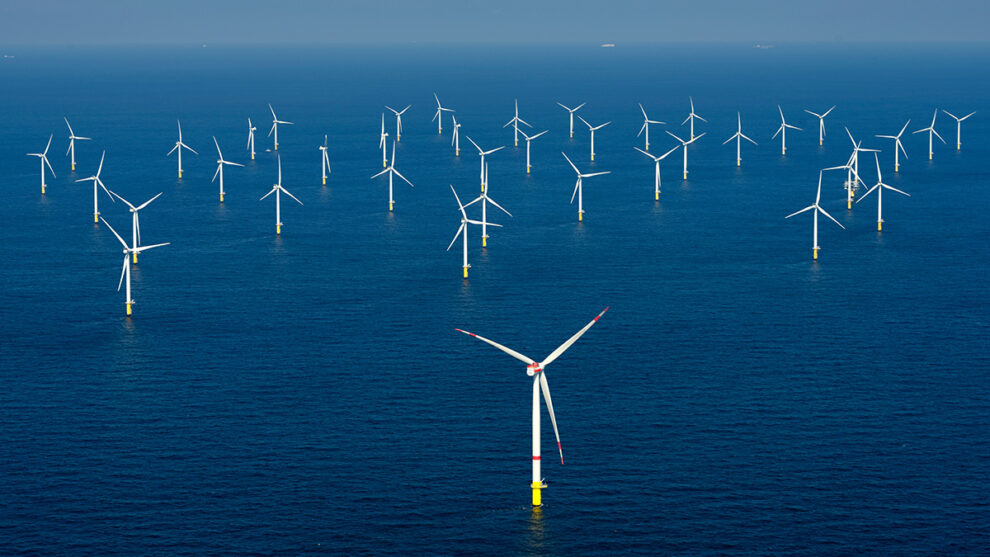France’s 40 GW offshore wind target is just a starting point, Energy Transition Minister Agnès Pannier-Runacher said on Tuesday (20 June), though some industry players view French plans as lacking ambition.
In February of last year, President Emmanuel Macron set out France’s energy objectives for 2050, announcing a target of 40 GW for offshore wind power development.
However, this target will likely be raised, Pannier-Runacher said at the opening of the Seanergy marine renewable energy trade fair in France on Tuesday (20 June).
“We are probably going to have to raise our targets to meet our growing electricity needs,” she said, noting that “this 40 GW target is very clearly a floor, probably not a ceiling.”
“This is going to be one of the issues in the energy planning bill that we are currently working on,” she added in reference to the Energy and Climate Programming Act that aims to determine the country’s future energy development and is due to be debated in parliament in autumn.
According to Pannier-Runacher, the raise will align with the working document on the progress of France’s energy targets and timetable drafted by the Ecological Planning Secretariat, which reports to the Prime Minister’s office.
Besides suggesting a 45 GW target for offshore wind power by 2050 instead of Macron’s proposed 40, the working document also gives further details about Prime Minister Elisabeth Borne’s announcement of 22 May, where she called for further efforts to align with the EU’s 2030 climate goal of reducing emissions by 55% compared to 1990 levels.
The government’s announcements are timely, as France needs to speed up its efforts in the field of renewable energies after failing to meet EU targets for 2020.
This is particularly true given that the EU has since raised its target, now for France on Monday (22 May), aiming for a 42.5% share of renewables in the EU’s overall energy consumption by 2030.
To raise targets for offshore wind power, the French government asked regional authorities on 7 June to launch a public consultation with local stakeholders.
The aim is to map out areas where wind farms could be set up by 2024 and in the longer term, develop a plan for the maritime seafront, which will be subject to a public debate in the autumn.
According to Pannier-Runacher, public consultations should act as a “lever” to involve citizens in the offshore wind development process and facilitate their acceptance with the local populations.
Why not more ambition?
At the end of April, France and eight other European countries signed a declaration to produce more than 300 GW of wind power in the waters of the North Sea, Celtic Sea, Irish Sea and Atlantic Ocean.
However, while the Ecological Planning Secretariat’s working document puts forward a target of 45 GW by 2050, some industry players are pushing for an even higher ambition.
“By working on planning and streamlining procedures within government departments, we could even achieve between 50 and 60 GW,” said Michel Gioria, from trade association France énergie éolienne, in comments for Le Monde on 14 June.
Indeed, the French electricity grid operator RTE has estimated the country’s offshore wind potential at 62 GW. France has only 8 GW of offshore wind installed or in the pipeline.
France’s first offshore wind farm was built in November off the coast of Saint-Nazaire, in the Atlantic Ocean, and has an installed capacity of 500 MW. Three others are currently under construction with a combined capacity of 1.5 GW.
On top of that, new calls for tenders are expected to be launched by the end of the year to extend existing wind farms and those already in construction, Pannier-Runacher said at Seanergy.
Regarding onshore wind and solar power, the Ecological Planning Secretariat aims to increase installed capacity annually. This could mean that by 2050, Macron’s 40 GW ambition for onshore wind power, set out in February 2022, will also likely be exceeded.
Source: Euractiv





































